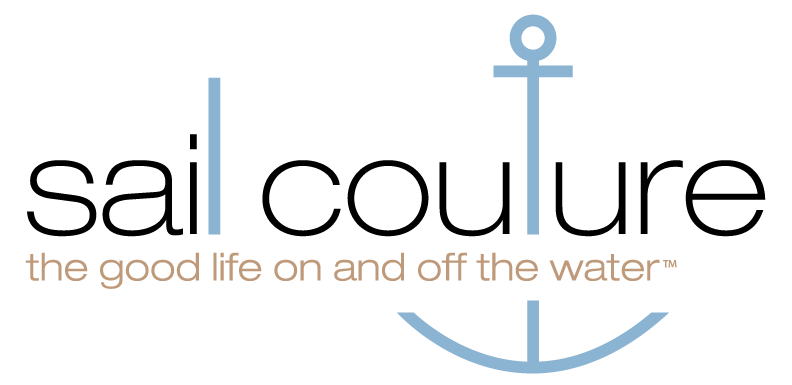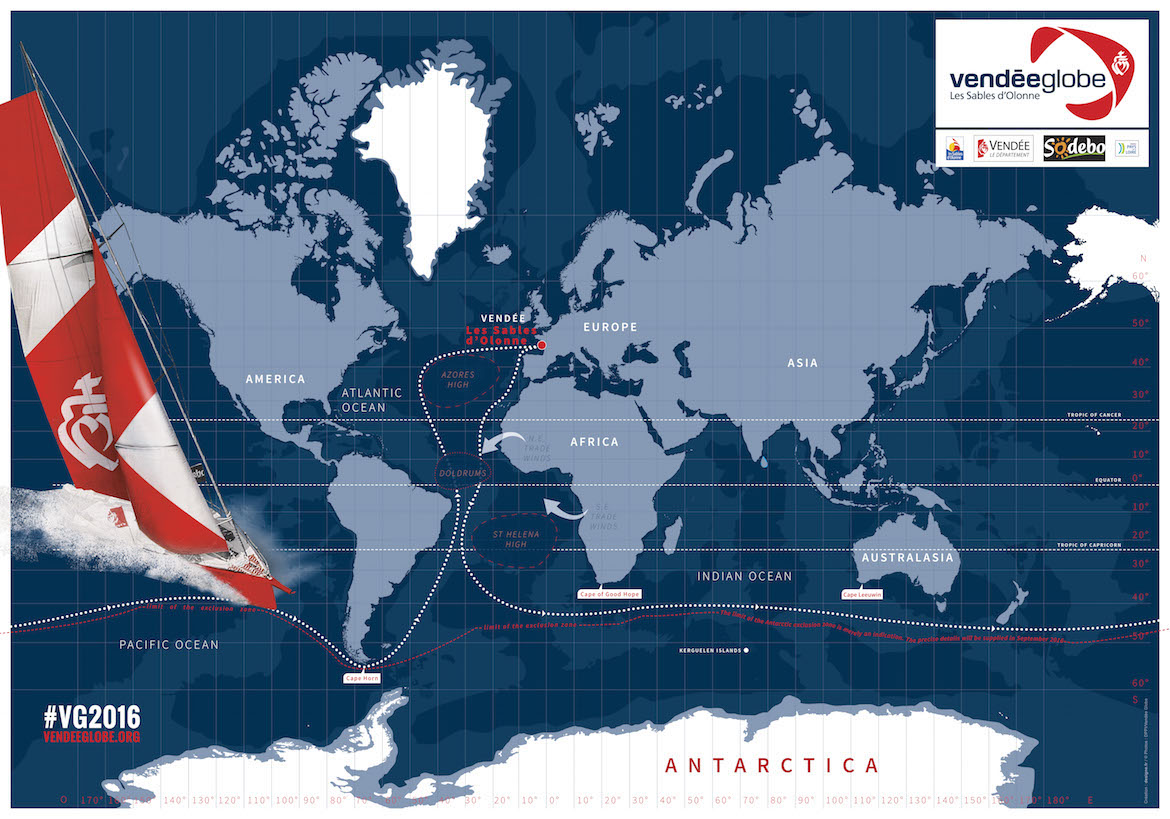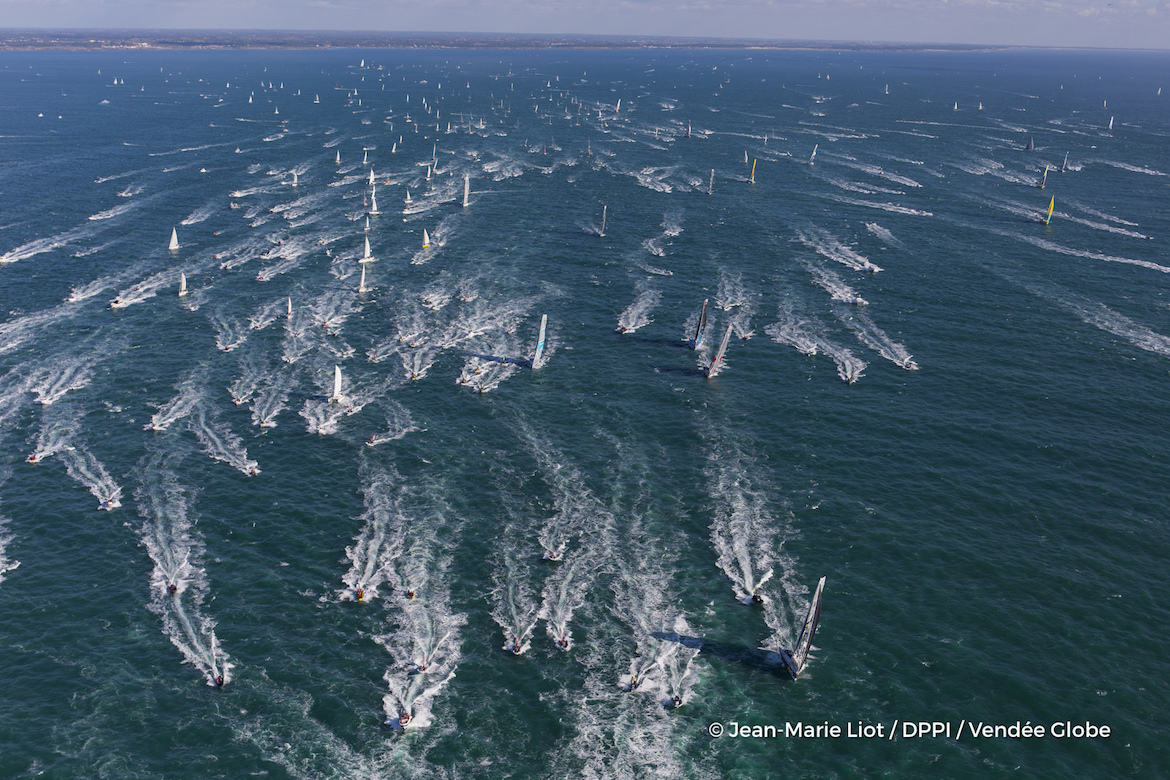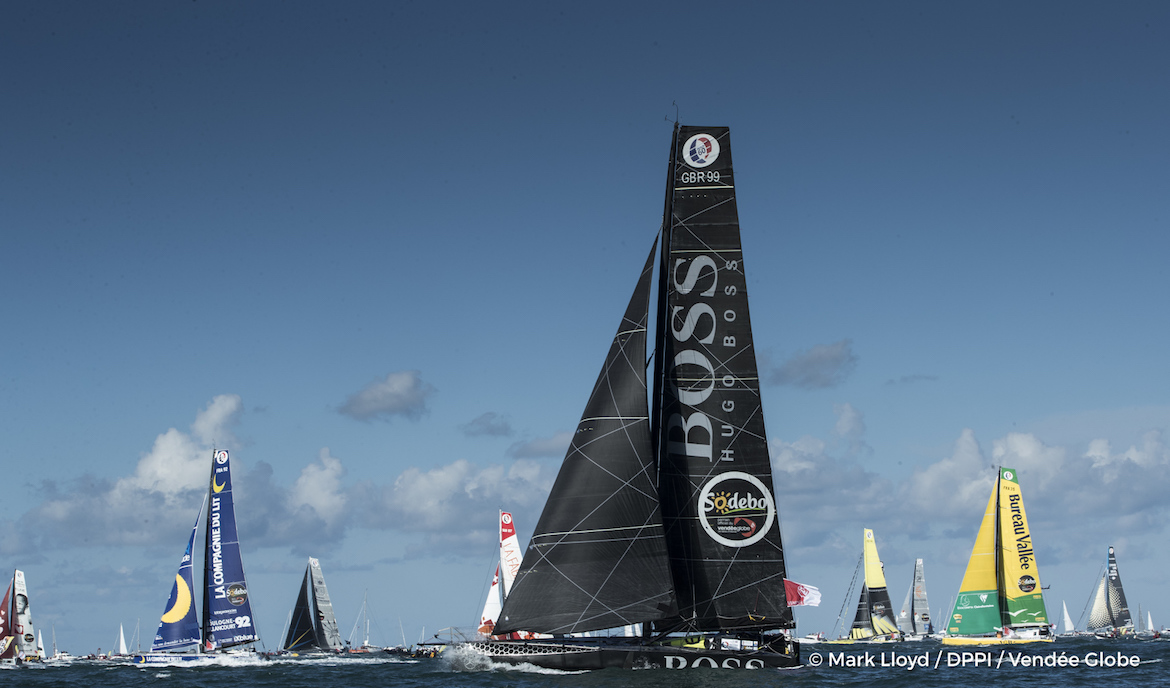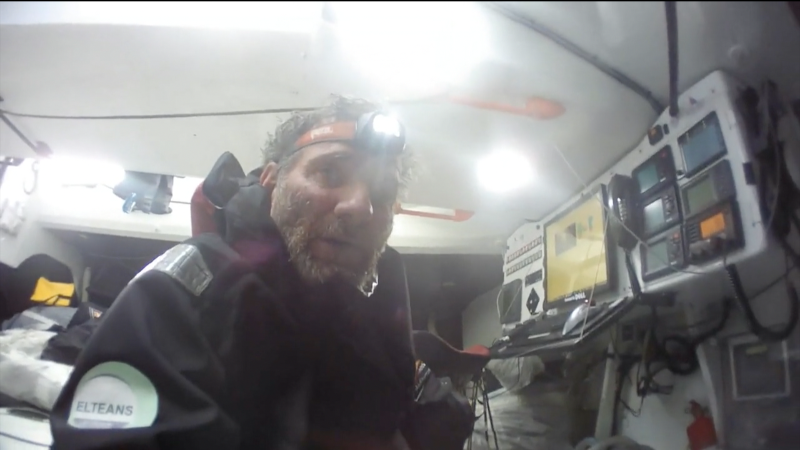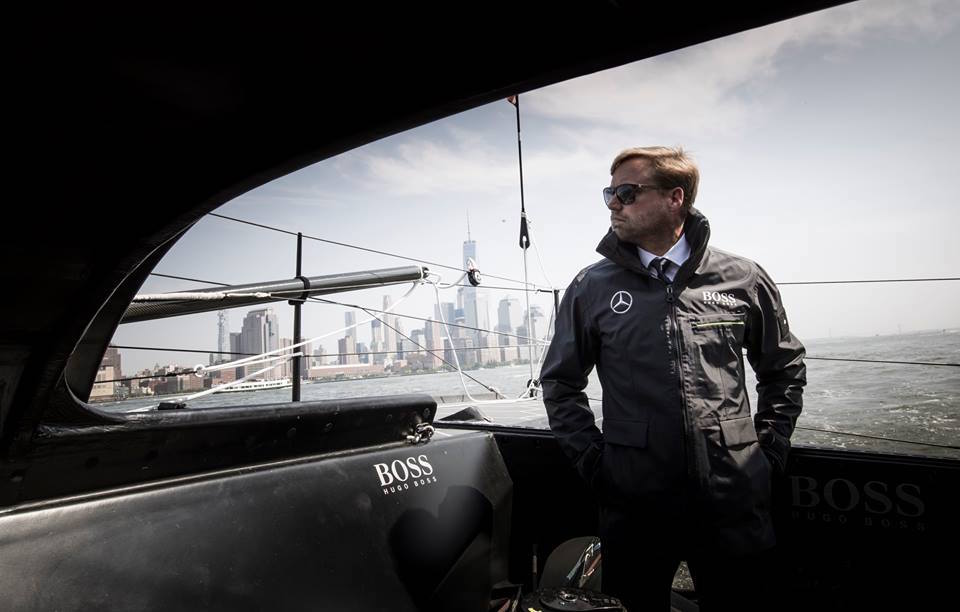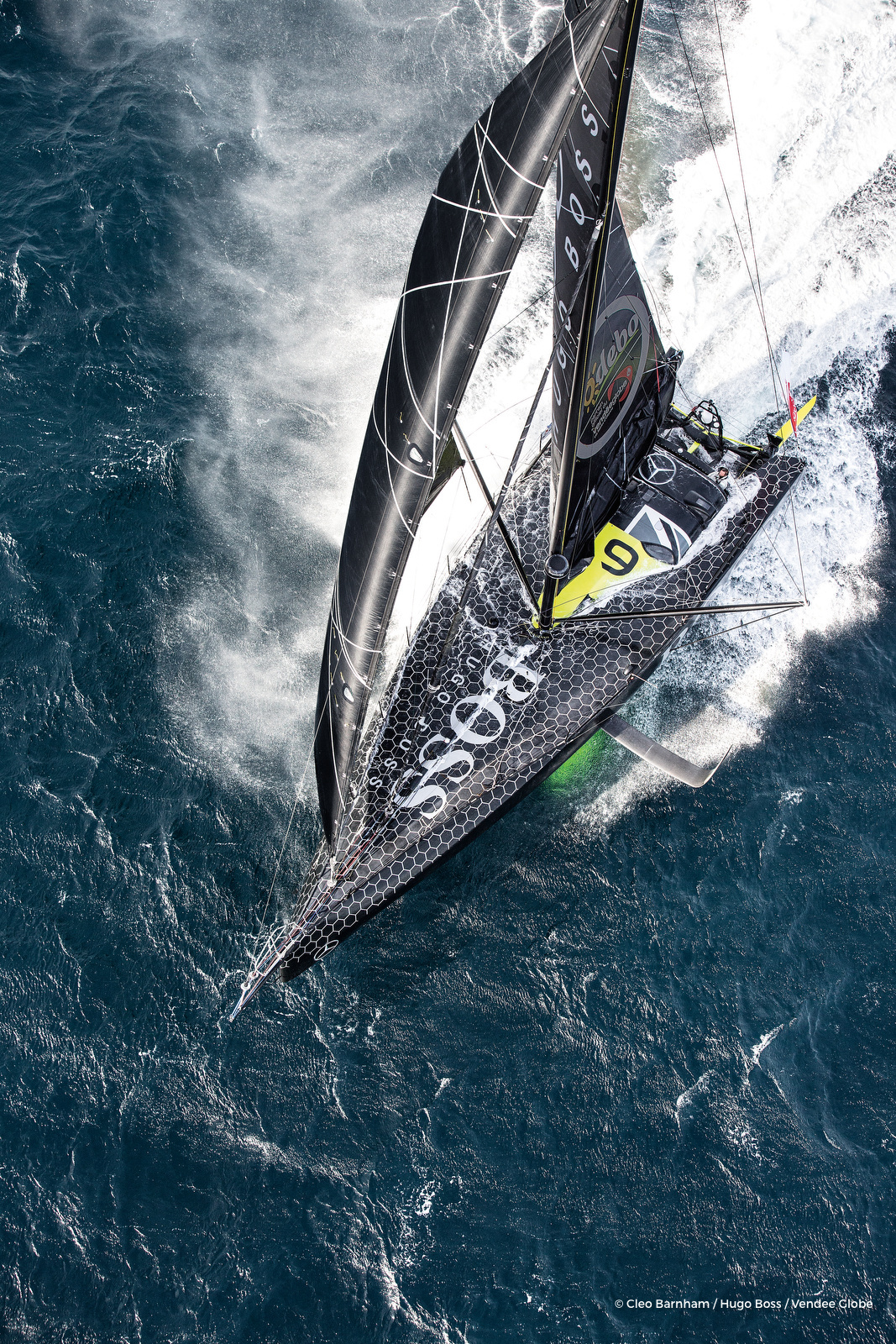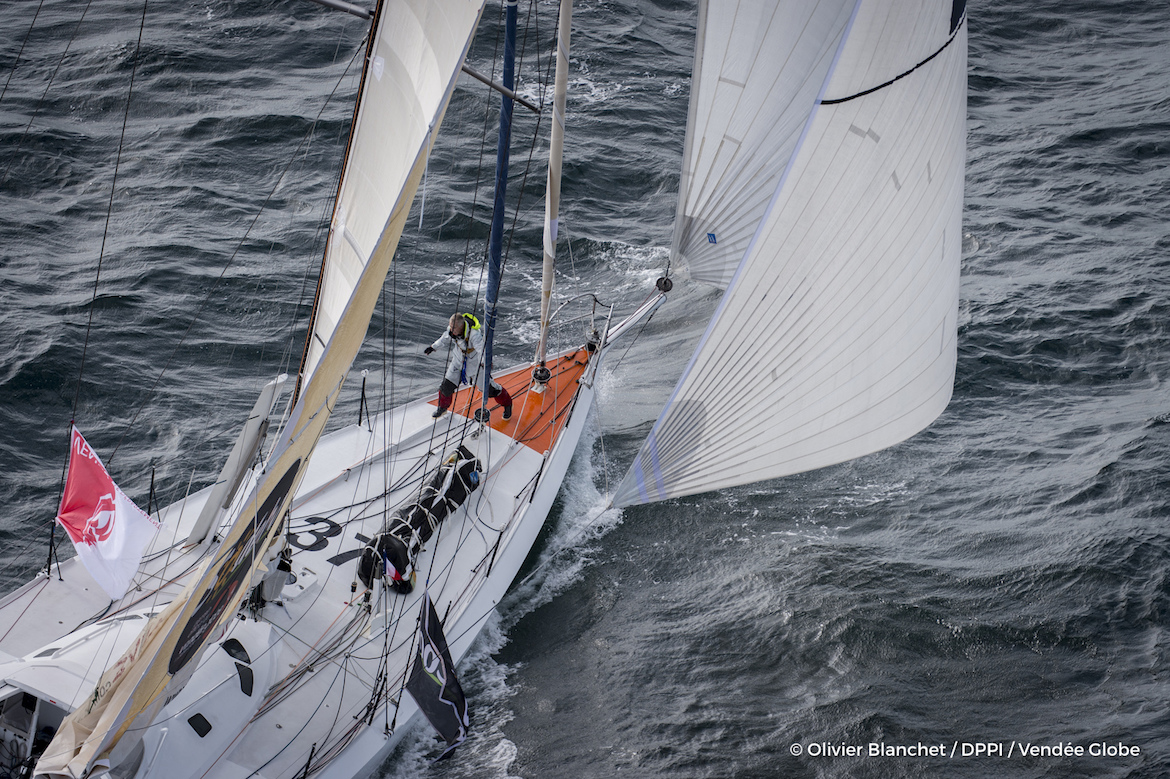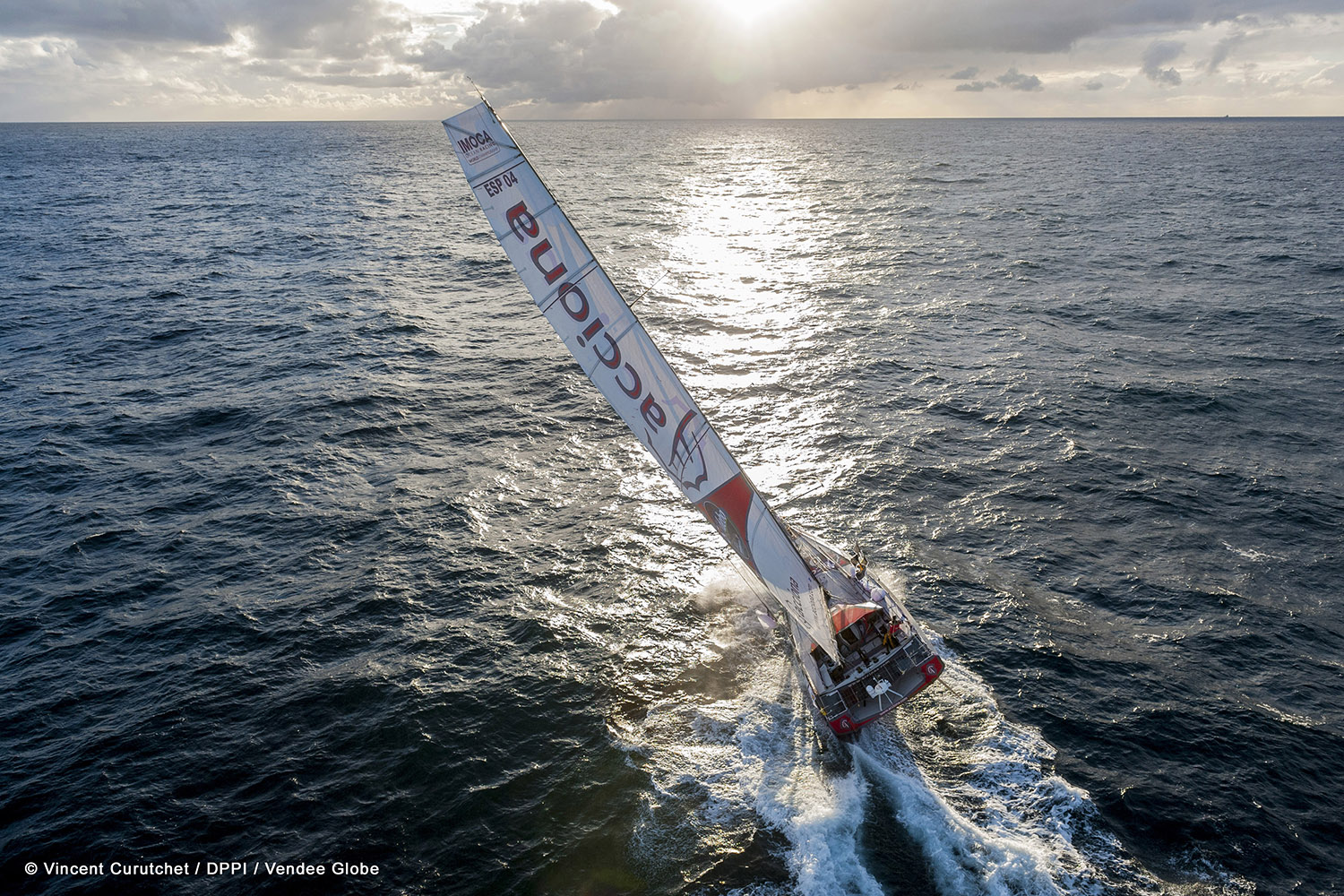One month into the 2016 edition of the Vendée Globe solo round-the-world race, 22 of 29 competitors remain in what has so far been the fastest Vendée Globe in history.
The Vendée Globe is the only non-stop solo round-the-world sailing race. Nicknamed the “Everest of the Seas,” it is a monumental test of endurance. The sailors race 24 hours per day on the massive 60-foot box-design sailboats starting in France, rounding the world’s three legendary capes in the Southern Ocean, across the Indian Ocean and the Pacific Ocean, facing the toughest conditions in the sport—towering waves, winds up to 50 knots, and sleep in only 20-minute increments.
“There is no other sporting event in the world that pitches man against the elements, solo and without support, for so long,” the 32-year-old first-time VG skipper Conrad Colman of Foresight Natural Energy wrote in his race blog. Colman is an American-New Zealand sailor now based in Lorient, France.
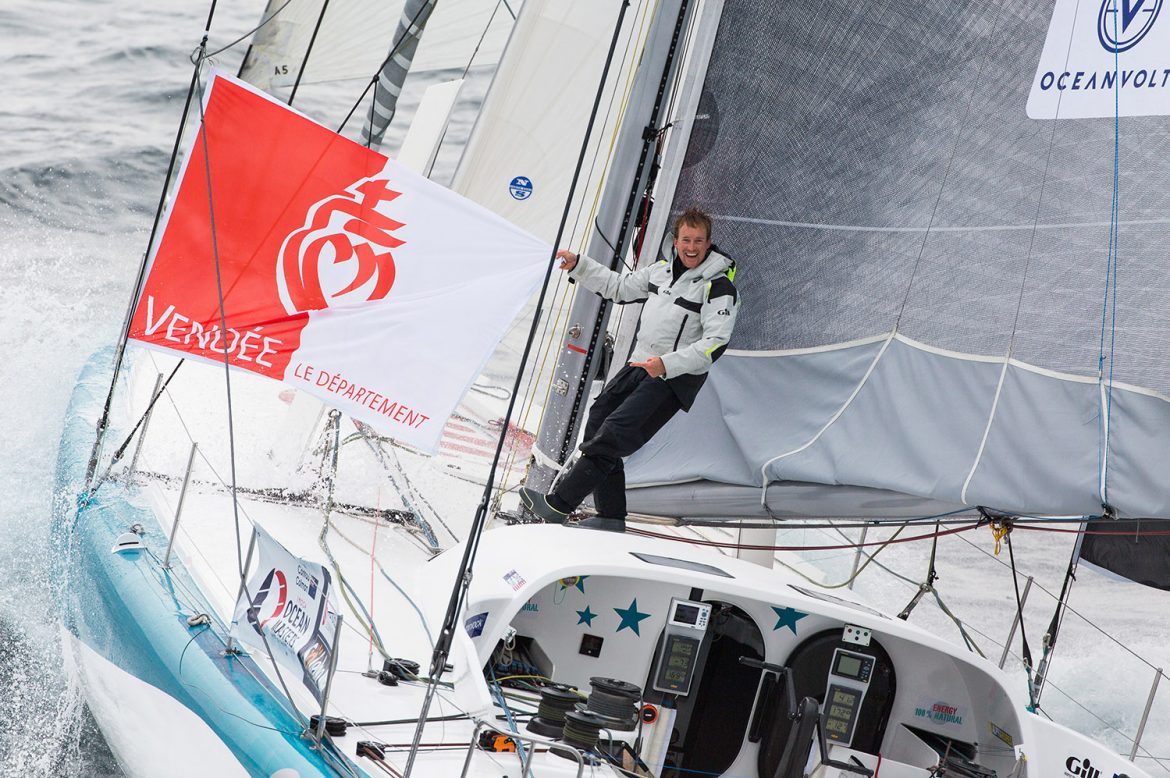
Foresight Natural Energy skipper Conrad Colman spent the first year of his life on a boat. Photo: Jean-Marie Liot/DPPI/Vendée Globe.
The Vendée Globe is a 28,000-mile race around the world, crossing all of the major oceans and rounding the world’s three legendary capes. Photo: Vendée Globe/Carte Parcours UK.
The fleet gets a hero’s sendoff at the start of the 2016 Vendée Globe in Les Sables d’Olonne, France. Photo: Jean-Marie Liot/DPPI/Vendée Globe.
About 350,000 thousand people gathered in Les Sables d’Olonne, France, on November 6 for the start of the race, but in the United States, the Vendée Globe is one of the least-well-known of the large sailing races.
For the average sailing enthusiast, let alone the average person, it might be hard to understand why anyone would want to put themselves through such an ordeal, but every four years since 1989, it’s attracted some of the biggest names in professional sailing, and a huge variety of luxury sponsors, including Hugo Boss, Land Rover, Helly Hansen, Beneteau, and aircraft engineering firm Safran, just to name a few.
Hugo Boss skipper Alex Thomson is the only British sailor in the 2016 Vendée Globe. Photo Mark Lloyd/DPPI/Vendée Globe.
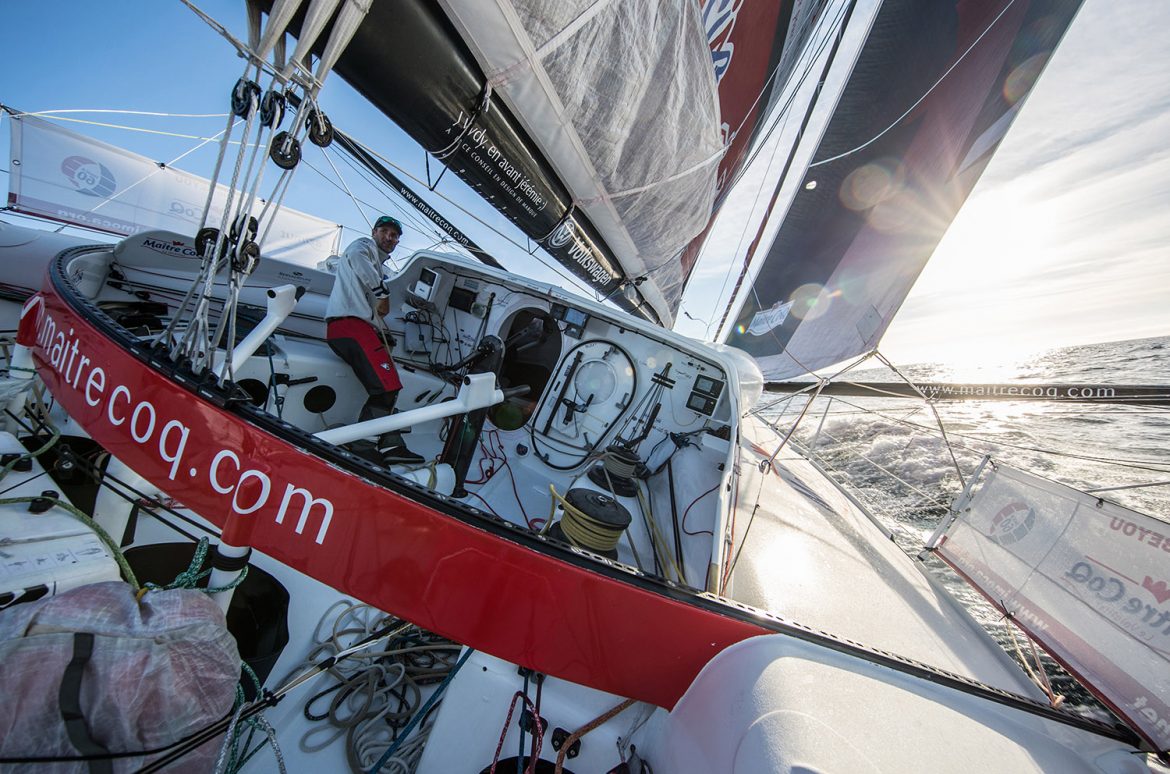
A view onboard Maitre Coq with skipper Jérémy Beyou. As of December 7, Beyou is in fourth. Photo Eloi Stichelbaut/Maitre Coq/Vendée Globe.
French skipper Kito de Pavant anxiously awaits aboard Bastide Otio after he struck an object, which destroyed his keel housing, ripped off his aft keel mountings, and left the appendage supported only by the hydraulic keel ram. A rescue operation is currently underway. Photo: Vendee Globe.
Throughout the seven-race history of the event, there have been daring mid-ocean rescues and even deaths. The first rescue is underway to retrieve French Skipper Kito de Pavant, now 120 miles north of the Crozet Islands. His boat struck an object that tore apart his keel housing and has reported a severe ingress of water. It’s not unusual for only about half of the fleet to even finish the race, but for those that do, this 28,000-mile marathon at sea turns professional sailors into legends.
The inaugural race in 1989-1990 was won by Titouan Lamazou, a French artist, writer, and sailor born in Casablanca. Lamazou also co-founded the Jules-Verne Trophy for the fastest circumnavigation by any type of yacht. Michel Desjoyeaux is the only sailor to win the VG twice cementing his position as the world’s leading solo specialist.
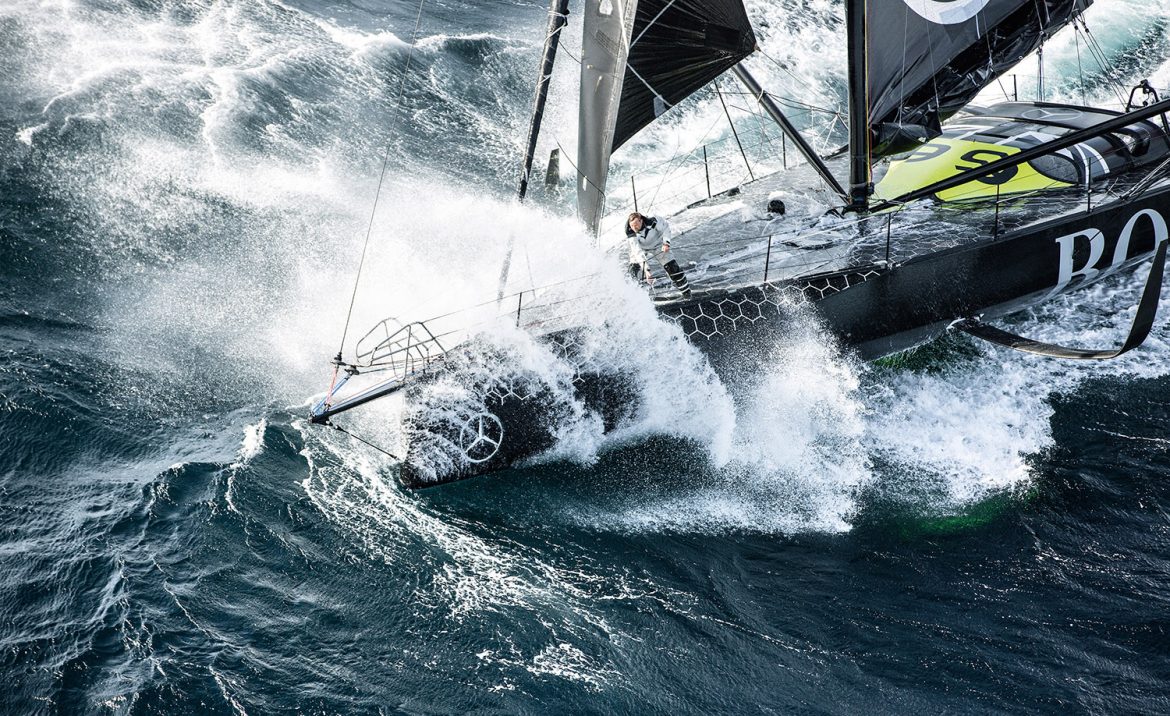
British sailor Alex Thompson hopes to become the first non-Frenchman to win the Vendée Globe. Photo: Cleo Barnham/Hugo Boss/Vendée Globe.
Alex Thompson modeling the Hugo Boss Travel Line. Photo: Alex Thomson Racing.
Protruding out of the side of the Hugo Boss boat is Thompson’s port-side foil. Photo: Cleo Barnham/Hugo Boss/Vendée Globe.
Alex Thompson of Hugo Boss hopes to garner that title as the first British sailor to win the race. Should he succeed, Thompson would also become the first non-French sailor to win. For the past several days, he’s been locked in a head-to-head battle with Frenchman Armel Le Cléac’h of Banque Populaire VIII. The two sailors have been changing positions every couple of days.
Thompson has already broken a number of VG records this year, though he is also sailing with a damaged starboard foil since mid-November. He reached made it to the Cape of Good Hope from France in 17 days, 22 hours, and 58 minutes—more than five days faster than Le Cléac’h’s record set in 2012. He also broke Jean-Pierre Dick’s record from the equator to Good Hope by four days.
Dick, the 2011 Sailor of the Year racing for St Michel-Virbac is currently in sixth; it is his fourth time in the race.
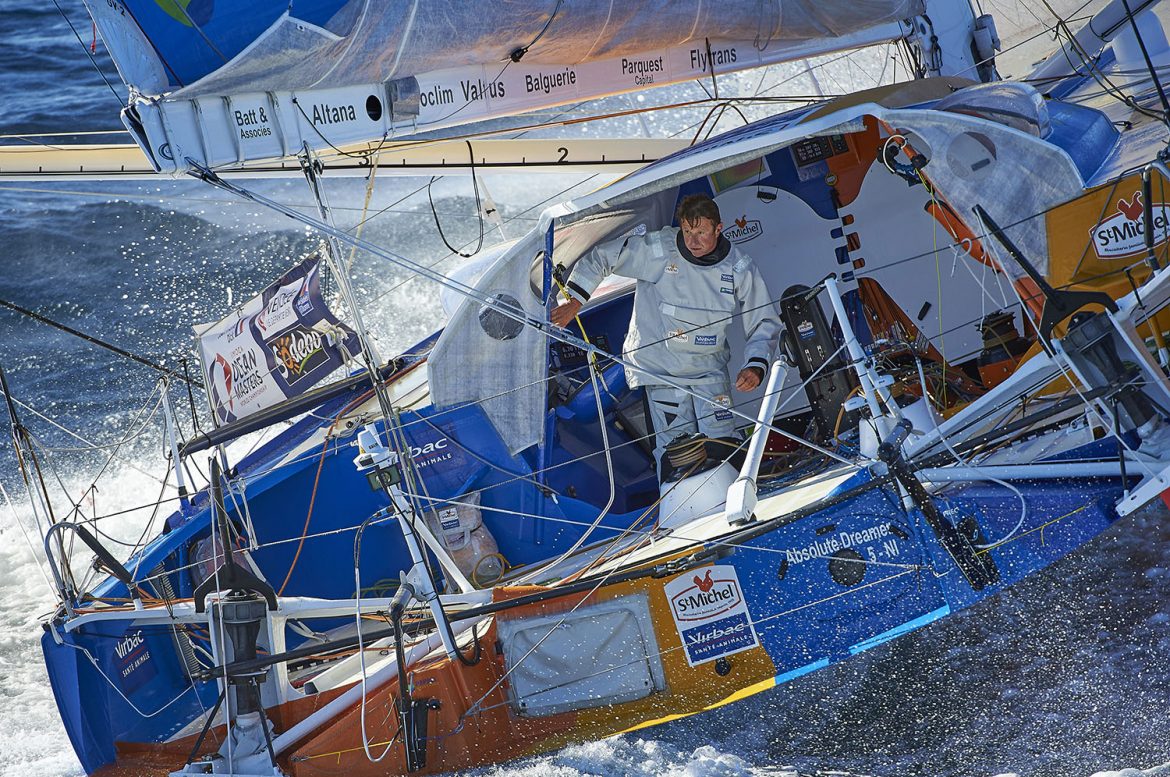
Onboard St Michel–Virbac with skipper Jean Pierre Dick, in sixth as of December 7. Photo: Yvan Zedda/St Michel-Virbac/Vendée Globe.
Great American IV skipper Rich Wilson is the oldest sailor in the race at 66. Photo: Olivier Blanchet/DPPI/Vendée Globe.
Le Cléac’h meanwhile has set a few records of his own, smashing the time to Cape Leeuwin in Southwest Australia by over five days. As of this writing, he has retaken the lead and is 130 nautical miles ahead of Thompson.
Not all of the VG skippers are professional sailors. Some, like American Rich Wilson are adventure-seeking amateurs. At 66, Wilson is the oldest competitor in the race. Sailing aboard Great American IV the former math teacher from Boston and defense analyst in Washington DC, is using the race to help educate schoolchildren in STEM subjects.
The lone Spanish competitor, Didac Costa from Barcelona, is sailing for One Planet One Ocean, an initiative of UNESCO’s Intergovernmental Oceanographic Commission, a group that works to bring the science community together to plan the future of marine science and technology.
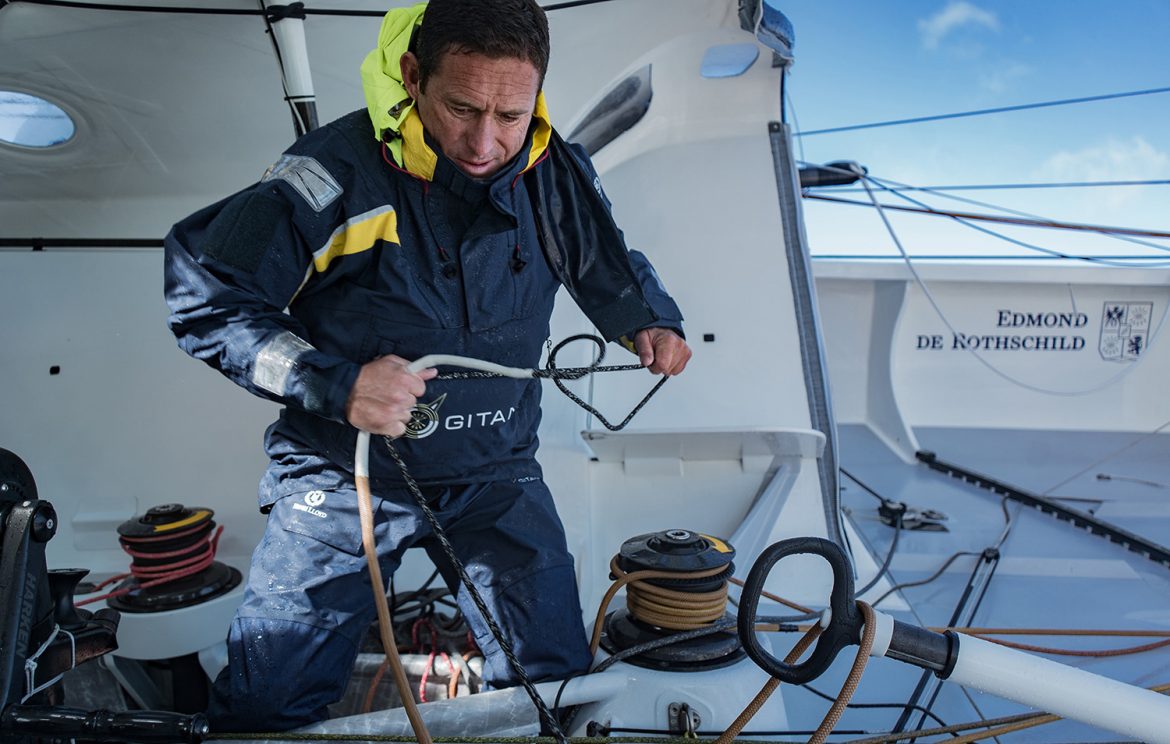
Sebastien Josse hard at work aboard Edmond de Rothschild. Josse was forced to abandon the race this week due to major damage to his port foil, which occurred after his boat slammed into the trough of a wave. Photo: Yann Riou/Gitana SA/Vendée Globe.
This year’s IMOCA 60 yachts are some of the most technologically advanced monohull sailboats in history. They are not all identical; rather they follow a box rule for a number of metrics including length, beam, mast height, and number of appendages (the rudders and the keel). For the first time ever, several of the boats feature foils, a design first made famous by the incredible AC 72 catamarans in the 34th America’s Cup.
Used on multihulls, the foils actually lift the boats out of the water giving them the appearance of flying. The IMOCA 60s can’t actually fly, but the foils do help them to sail higher on the water and also reduce pitching, which results in better stability when sailing under autopilot and helping to increase the security of navigation.
There were 29 skippers at the start of the 2016 edition of the race one month ago—as of December 7, only 23 competitors remain. There won’t be a second win for PRB’s Vincent Riou—the only previous winner entered in this year’s race was taken out after a UFO collision, that is, an unidentified floating object. Bertrand de Broc of MACSF and Morgan Lagravière of Safran have also abandoned due to UFO collision.
“I would like to remember the positive things in this adventure: 18 days of extraordinary racing aboard a boat that performs exceptionally well, with which I was always up with the frontrunners. This solo race was also an opportunity for me to find out more about myself and what really matters in life. I would like to thank all my technical team as well as the fans, who have been supporting me,” said Lagravière, who at 29 years old, was the youngest entrant this year and many had expected him to be a podium finisher.
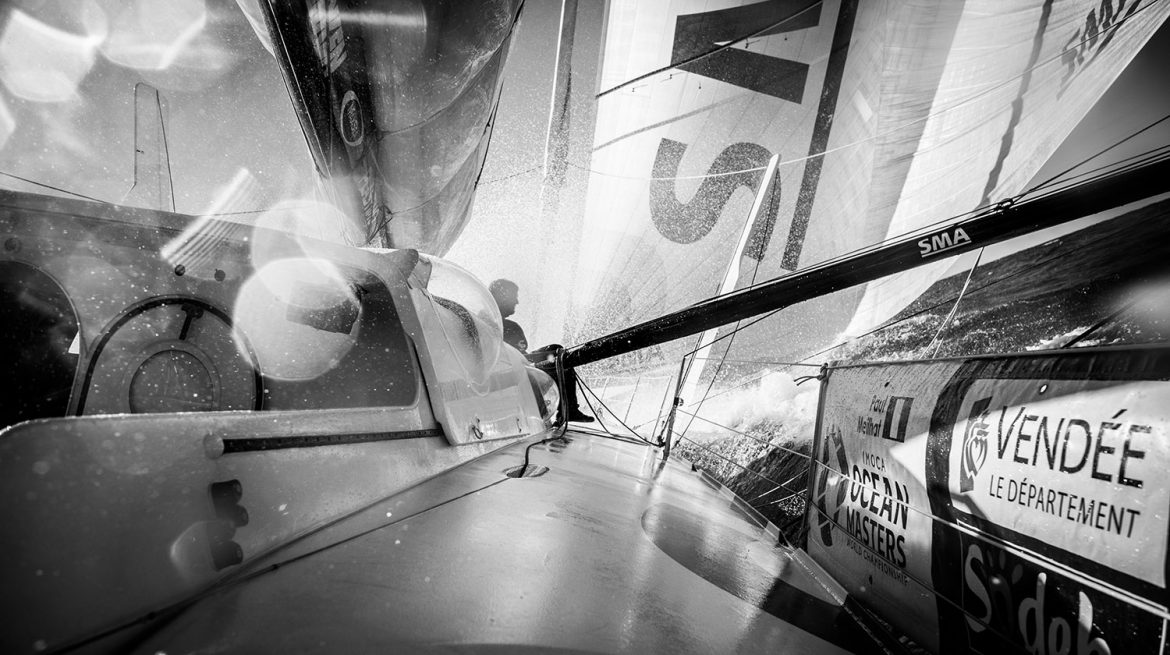
The incredible IMOCA 60s make for a beautiful backdrop for photography. Onboard SMA with skipper Paul Meilhat, who is currently in third. Photo: Eloi Stichelbaut/DPPI/Vendée Globe.
The first abandonment occurred just six days into the race when Tanguy de Lamotte’s Initiatives Coeur suffered a masthead crane failure. On December 4 Kojiro Shiraishi of Spirit of Yukoh, the first Japanese racer ever to enter the race, lost the top third of his mast and was also forced to retire.
“As the first Japanese sailor to do the Vendée Globe, it was really an honor to be there at the start. It’s true that it is a disappointment not to complete this Vendée Globe. I have had lots of messages of support and would like to thank everyone,” said Shiraishi, who is headed to Cape Town, South Africa.
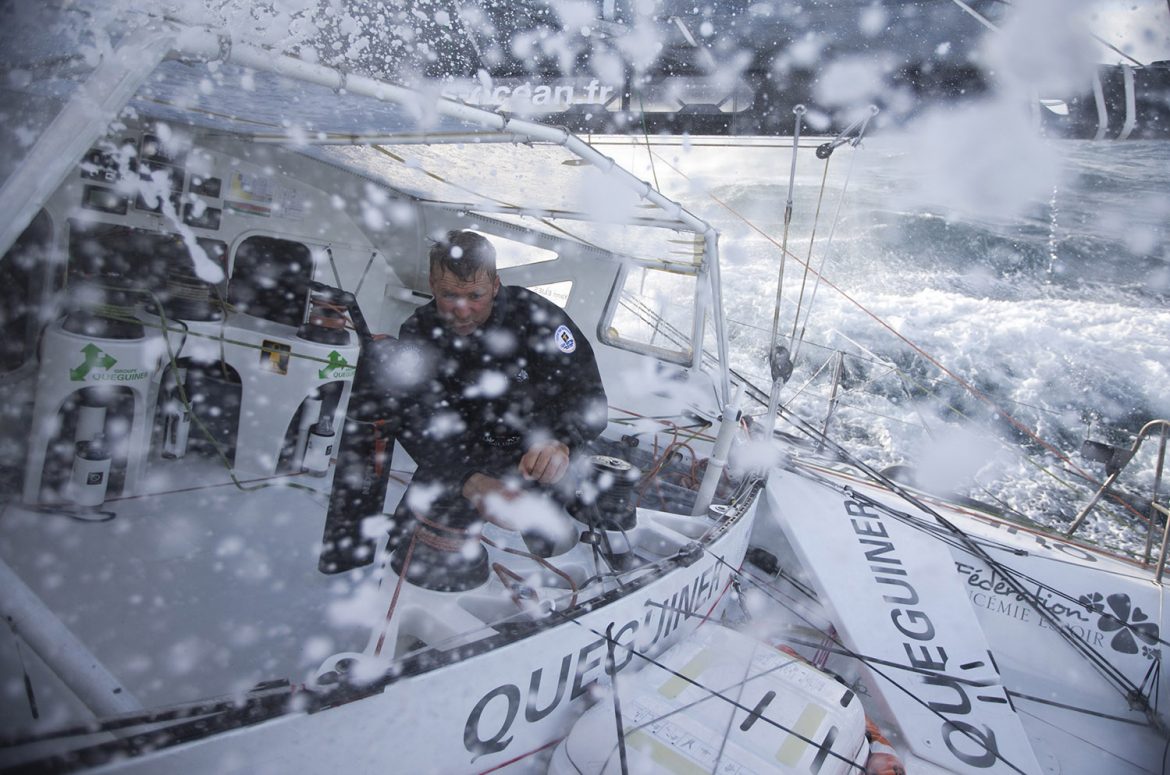
Sailing the Vendée Globe makes for a wet 80 days as shown here by Yann Elies skipper of Queguiner – Leucemie Espoir. Photo: Alexis Courcoux/Queguiner.
29 competitors started the 2017-2017 Vendee Globe; only one will win. Which one? Photo: Vincent Curutchet/DPPI/Vendee Globe.
Sébastien Josse racing aboard Edmond de Rothschild and Romain Attanasio of Famille Mary-Etamine du Lys have also retired. Both skippers were attempting to repair damage earlier this week but were unable to do so.
“I can’t hide the fact that it’s been very hard, as these boats are very demanding and uncomfortable. To sail quickly, you have to foil and to foil, you need to stay hard at it all the time. But I was pleased to be here. I gave it my all and I don’t have any regrets about this race concerning the way I sailed the boat,” said Josse.
Thanks to satellite and drone technology, not to mention the help of the French Navy, 2016 Vendee Globe has benefitted from unprecedented live coverage. You can follow live updates, blog posts, and videos on the Vendee Globe website and on all of the teams’ individual social media accounts!
